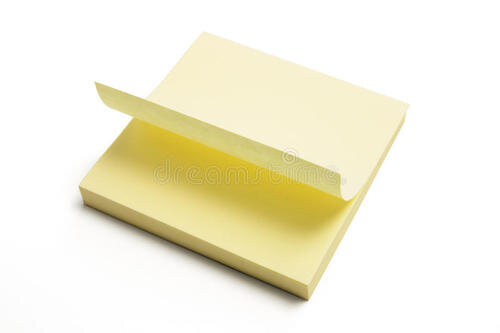Dustings #40
/I was talking with someone over email about places to hide a crib. “Ah,” I said, “You smothered your baby to death and now you’re trying to remove any evidence you ever had a kid. Smart. What I like to do in that circumstance is—”
No, he explained, not that kind of crib. Like a crib-sheet that holds information you don’t have memorized or information for which you’re not 100% comfortable relying on your memory. The order of a stacked deck, say, or a progressive anagram. Sometimes you’ll have this sort of information mostly memorized but you’re not completely confident to do a trick with it because you don’t want to find yourself frozen with no option if you just completely blank on what card is at position 36 in the deck. So you might take that information and write it on a tiny piece of paper you can palm, or have it printed in small letters on the barrel of a Sharpie or—most retardedly—on the outside edge of a watch bezel.
But if you’re performing a trick that isn’t magician-centric (i.e. a trick that isn’t focused on your own “powers”), you can often “hide” the crib in the presentation.
What I mean by hiding a crib “in the presentation” is having a presentation that allows you to access a crib in a perfectly logical way where the action doesn’t need to be concealed.
In magician-centric presentations, where the power behind the effect is supposedly concentrated in the performer, it can be difficult to justify openly looking at something else.
But imagine your presentation is related to “something I saw online,” “this weird ritual I read in this book,” “this dream I had where we went through this strange procedure,” or “something this guy I met at a party showed me he could do” or something along those lines. In those cases you can refer back to that thing you read online, open up the book, take a look at the notes you scribbled down after your dream, or text that guy you met at the party. And in the process of any of those things, you can get a good long look at your crib.
You might think people would be quick to assume that you’re looking at something that is helping you for the trick, but that hasn’t been my experience. If your action is motivated by the premise of the trick, then they may believe you’re really doing what you’re saying, or they may feel the action is just “theater.” But I’ve found they’re unlikely to think it’s theater for the purposes of doing something sneaky. (This is not just my experience, but also based on some testing we did years ago that I will post about if/when I can track down the data.)
So they might think I was really texting some magician friend on the phone who told me where their chosen card was in the deck. Or they may think I was just pretending to text my magician friend to find out where their chosen card was in the deck as part of the story of the trick. But they don’t seem to make the leap where they say, “I bet he’s pretending to text his friend so he can reference something else on his phone that helps him with the trick.”
On a related note, if you’re ever in a position where you can snap a quick picture of a shuffled deck (either in a face-up fan or face-up spread), then you can do some stuff you would normally do with a stacked deck. And using the premise of communicating with “the magician” over text, you can pull off a very strong, simple trick.
So, for example, the person you’re with cuts the deck beneath the table a few times and then pockets, sight unseen, whatever card they cut to. The rest of the cards are put back into the case (where you get a peek of the bottom card). In the process of apparently texting your magician friend, you look at the picture to figure out what card followed the card you peeked from the bottom of the deck (in other words, the card now in the spectator’s pocket). Then you can pretend to have a phone or text conversation with someone to reveal that information. (Or have an actual phone/text conversation if you have someone really helping you out.)
How to get the picture of the deck? Well, that’s going to depend. This is something i don’t do with my own deck. So I’ll do it at a card game when there is a break or when the games have wound down for the evening. If no one else is in the room I’ll spread the deck on the table and take a quick pic. If others are around but people aren’t paying too much attention, I’ll be playing with the deck absentmindedly and at some point I’ll fan the deck and put it under the table edge and then I’ll take the picture. From the perspective of anyone looking over who hasn’t been watching me the whole time, I’m just looking at something on my phone.
From there you have the crib for your “stacked” deck. And any premise that involves using your phone can be used to hide the fact you’re looking at your crib.
In a recent post I mentioned using spaced repetition to build up your repertoire and keep the tricks fresh in your head.
On this page you can find an incredibly well done explanation of the concept of spaced repetition that goes into it in much more detail.
Even if you have no interest in applying it to your magic pursuits, give that page a read and you’ll see how useful it can be in other areas of interest.
I guess the most common question I get here at the Jerx is:
Andy, what’s it like to have sex with you?
Great question. But sadly, despite my mastery of the English language, I’ve found it a little difficult to put that experience into words. Some things simply cannot be captured in text. We may need to add a few more letters to the alphabet before you can accurately describe the dance with the divine that is a sexual encounter with me.
Fortunately, I’ve found a video that puts you right into the experience of being opposite me as we engage in rigorous coitus.
Making love to me is just like this clip from Bobby J. Gallo’s promo video from 1996.
I play that exact song.
The expressions I make are IDENTICAL (A combination of self-satisfaction and self-amusement, with a little bit of “oops, did I do that?” mixed in.)
It lasts 26 seconds.
And at the end I shoot all over your face.
























